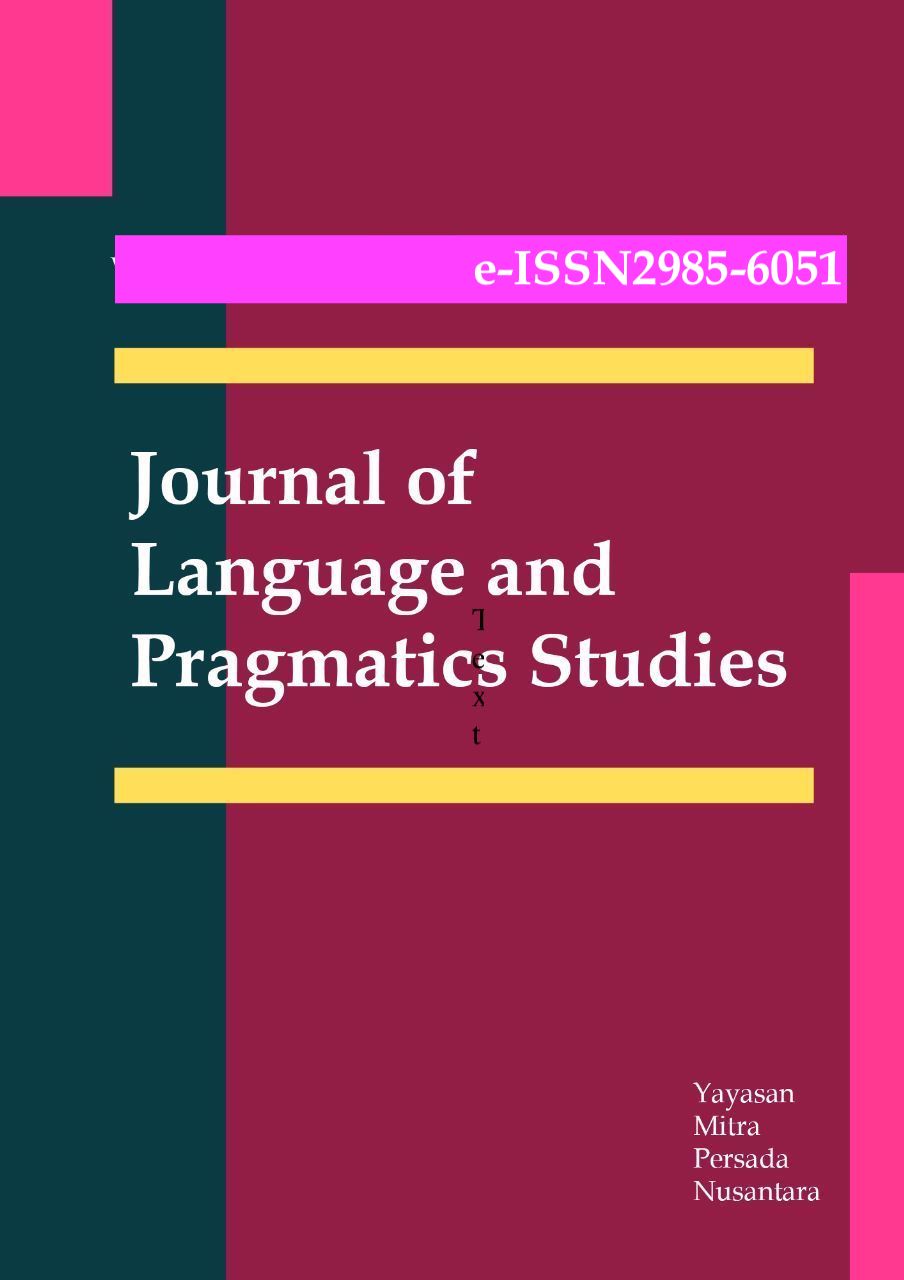An analysis of the interpersonal meaning of lyric and video “zombie” by day6
DOI:
https://doi.org/10.58881/jlps.v1i1.3Keywords:
discourse analysis, figurative expressions, song lyricsAbstract
Song is a learning media that often use to learn English by the students but sometimes they do not understand the meaning of the song used. This study focuses on analyze the intended meaning from some figurative expressions through the song lyric and the symbolic signs and gestures on the video clip of Day6 “Zombie”. The data of this study were the lyrics of Day6 “Zombie (English Version)” and the official video that uploaded on 11th May 2021 by JYP Entertainment. The lyrics and the video were analyzed by Fairclough’s critical discourse analysis by categorizing the figurative expressions that showed the intended meaning and explain the symbolic expressions through semiotic study. The result shows if there are six figurative expressions such as metaphor, personification, paradox, repetition, metonymy, and symbolism. The images are delivered through colour schemes, symbolic objects, and gestures. This study concluded that the intended meaning from lyrics and the music video of Day6 “Zombie” tells about the hopeless feeling of someone who always does the same thing every day.
References
Alek, A., Marzuki, A. G., Hidayat, D. N., & Sari, E. N. A. (2020). A critical discourse analysis of song “Look What You Made Me Do” by Taylor Swift. Eralingua: Jurnal Pendidikan Bahasa Asing dan Sastra, 4(2), 154-161.
Bruce-Mitford, M. (1996). The illustrated book of signs & symbols. Dk Pub.
Cardinal, B. J., Rogers, K. A., Kuo, B., Locklear, R. L., Comfort, K. E., & Cardinal, M. K. (2015). Critical discourse analysis of motivational content in commercially available exercise DVDs: Body capital on display or psychological capital being developed? Sociology of Sport Journal, 32(4), 452-470.
Gunawan, ST., Hidayat, DN., Alek, A., & Husna, N. (2021). Figurative language used in Blackpink featuring Selena Gomez's song lyric "Ice Cream": A discourse analysis. Journal Of Applied Studies In Language, 5(1), 1-9. doi:10.31940/jasl.v5i1.2281.
Hassen, R. (2015). Discourse as medium of knowledge: Transmission of knowledge by transmission of discourse people live. Journal of Education and Practice, 6(31), 119-128.
Hornby, A.S. (1992). Oxford Advanced Learner’s Dictionary of Current English. England: Oxford University Press.
Lauwren, S. (2020). Interpersonal functions in Greta Thunberg’s “civil society for rEUnaissance” speech. Journal Of Applied Studies In Language, 4(2), 294-305. doi:10.31940/jasl.v4i2.2084
Leap, W. L. (2015). 31 Queer linguistics as critical discourse analysis. Discourse Analysis, 661.
Ramlan. (1992). Introduction to Linguistic analysis. Semarang: IKIP Press.
Rusdianto, F. (2016). Discourse Analysis of a Song Lyric Entitled" We Will Not Go Down”. Register Journal, 9(1), 90-105.
Setiawati, W., & Maryani, M. (2018). An analysis of figurative language in Taylor Swift’s song lyrics. PROJECT (Professional Journal of English Education), 1(3), 261-268.
Siregar, TM. (2021). The critical discourse analysis on Joe Biden’s elected president speech. Journal Of Applied Studies In Language, 5(1), 79-86. doi:10.31940/jasl.v5i1.2298
Wajdi, M. (2018). Classroom Discourse: A Model of Classroom Language Research. Surabaya: Jakad Publishing.
Wu, Z., & Hou, S. (2015). Heritage and discourse. In The Palgrave handbook of contemporary heritage research (pp. 37-51). London: Palgrave Macmillan.
Downloads
Published
How to Cite
Issue
Section
License
Copyright (c) 2022 Ni Kadek Dwi Antari

This work is licensed under a Creative Commons Attribution-NonCommercial-NoDerivatives 4.0 International License.



